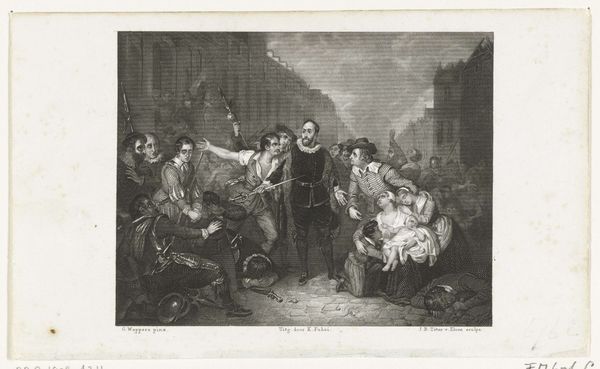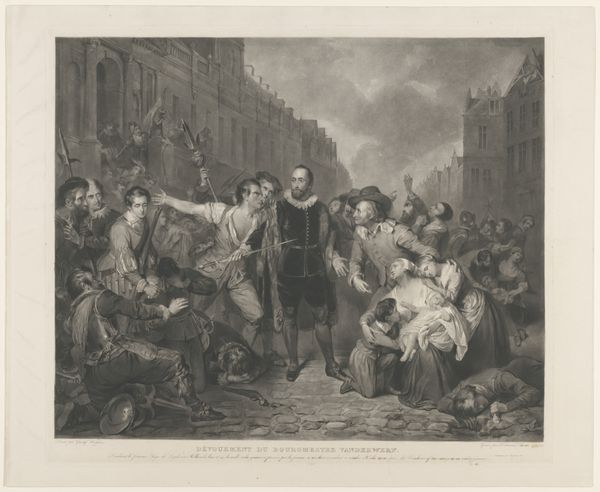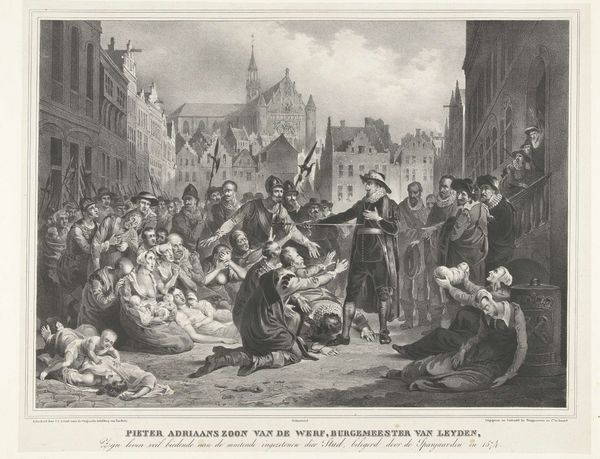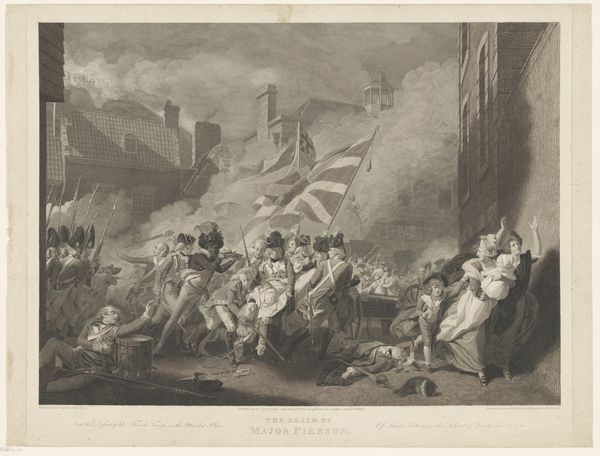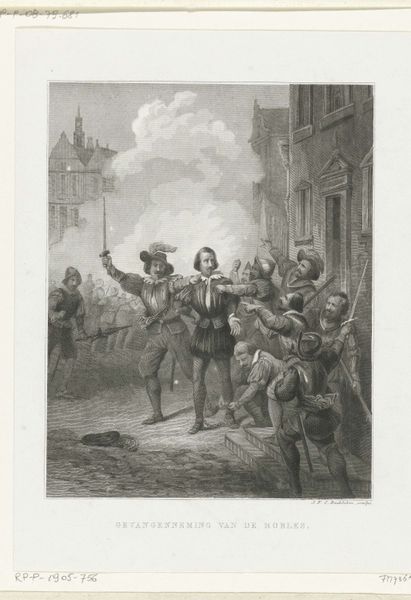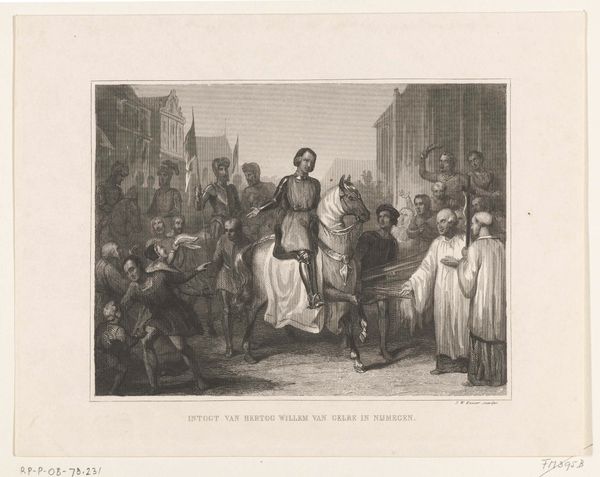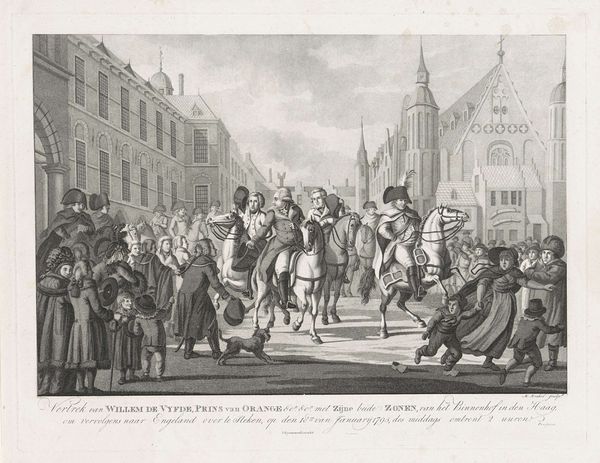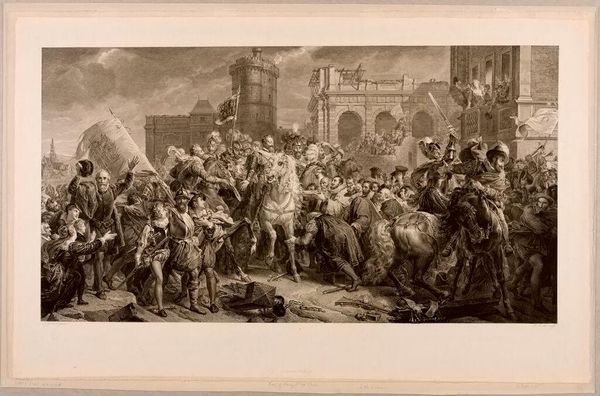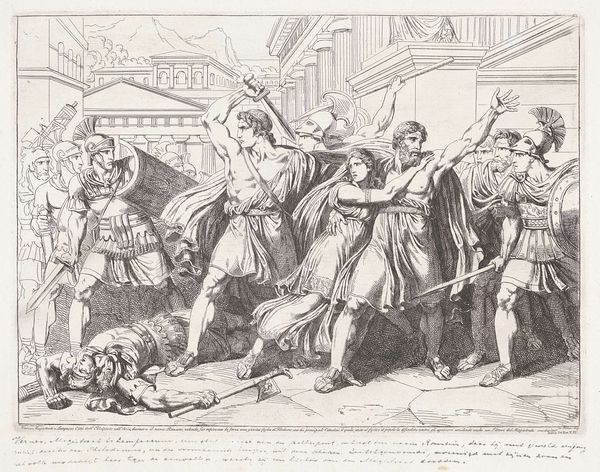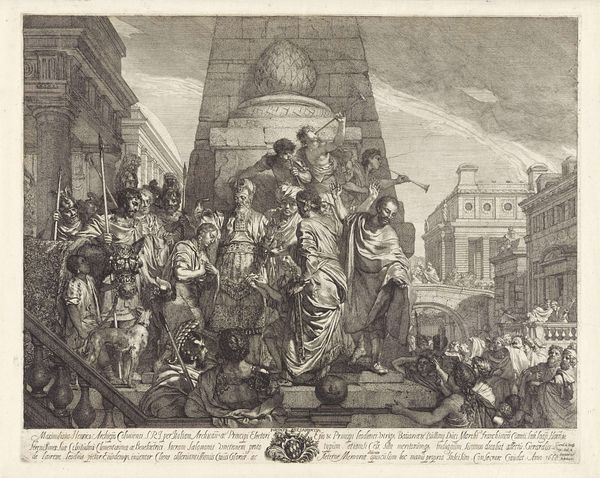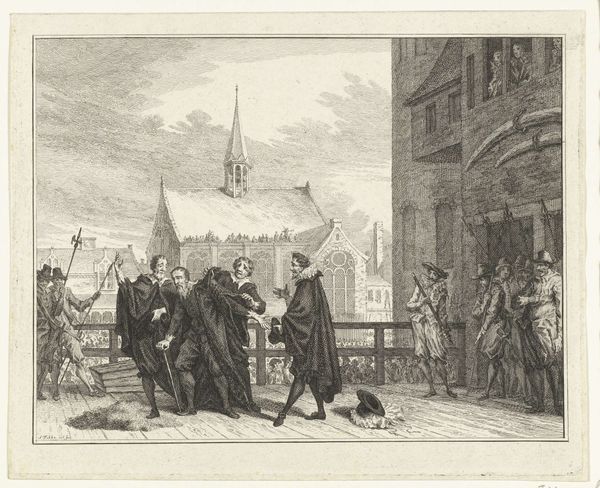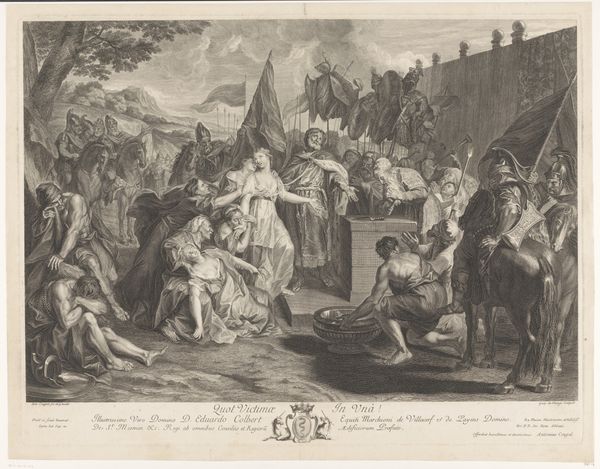
De zelfopoffering van burgemeester Pieter van der Werff, 1574 1829 - 1894
0:00
0:00
Dimensions: height 360 mm, width 500 mm
Copyright: Rijks Museum: Open Domain
Curator: This print, dating from between 1829 and 1894, depicts "The Self-Sacrifice of Mayor Pieter van der Werff, 1574." Editor: What a somber and evocative scene. The tonal gradations create such dramatic lighting – the figures almost seem to emerge from a murky history. I immediately notice the figures around a central standing man, while others slump, lifeless, in the foreground. Curator: Absolutely. It's crucial to understand that we're dealing with an engraving. Note the artist, Adolf Carel Nunnink's reliance on line and the strategic use of cross-hatching. That intense visual weight relies entirely on those material and mechanical processes. Editor: Indeed. Observe the man standing in the middle. His dark clothing juxtaposes sharply against the pallid figures huddling around him. A sense of leadership emerges, yes, but there's a visual tension, almost as if he is taking their sacrifice in. He's an icon of stoicism but almost, also, of reluctant sacrifice. Curator: Contextually, engravings like these served a very different function back then, right? Reproduction! This wasn’t just art for art’s sake. This was about dissemination. Consider the print shops, the engravers laboring to recreate Wappers’ original image… mass consumption. Editor: Exactly. Think about the semiotics of sacrifice! Van der Werff offered himself up as food for the starving citizens of Leiden during the siege by the Spanish. It's a potent symbolic act that blends civic duty with religious connotations. Those outstretched arms, that prostrate figure...all gestures loaded with meaning. Curator: You point out the outstretched arm as a rhetorical stance, one of several designed to move viewers from a specific class that could afford to bring something like this home with them. Also notice the city’s architecture serves not just as scenery, but emphasizes the physical context of the citizens struggles! Editor: The cityscape also feels charged, like a character itself in the drama unfolding below. And that pale figure swooning in front. Its evocative qualities make a memory as much as a history! It is all interwoven into one story being represented. Curator: By understanding Nunnink’s processes in reproduction and material conditions that shaped prints we gain important historical understanding. Editor: Indeed, focusing on these crucial choices—what to show, and what to highlight through those choices—reveal lasting symbolic structures still active today.
Comments
No comments
Be the first to comment and join the conversation on the ultimate creative platform.
